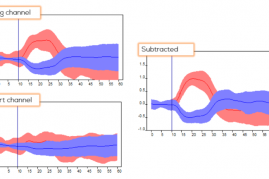- Patented compression technology and agarose embedding process tissue and eliminates chattermarks
- Slices over 5x faster than other market vibrating microtomes
- Preserves surface neurons to significantly improve patch clamping results for electrophysiology
- Slice thickness ranging from 4μm-2000μm
- Produces free floating slices for better immunohistochemistry (IHC) – lmmunohistochemistry results
- Fully automated slicing, so no more tedious cryostat cranking
- Auto Zero-Z® technology reduces z-axis deflection to <1 μm
- Light footprint for increased portability
Benefits of Compression
When using the Compresstome®, you will embed your tissue in agarose inside a specimen tube. The open end of the specimen tube has a slightly tapered edge. As tissue and agarose cross the edge of the tube, it gets slightly compressed. This compression helps stabilize the tissue during sectioning, and allows the Compresstome® to section at speeds up to 5x faster than other market vibrating microtomes. Overall, the Compresstome® provides a significant improvement on the health and longevity of live slices, and virtually eliminates chattermarks in fixed tissue slices.
Chattermarks
Above you can see the significant reduction in chattermarks in tissues slices produced with our Compresstome® VF-300-0Z versus sections made by another leading market vibratome.
Electrophysiology
- More than doubles the ratio of healthy-to-dead cells of acutely cut brain slices by preserving the upper surface layers of neurons.
- Preserves subcellular microstructure by stabilizing tissue samples during sectioning.
- Dramatically increases brain slice survival time in ACSF!
- The Compresstome® is ideal for getting healthy neurons for patch-clamp recording from mature mice (over 18+ months!). Check out www.brainslicemethods.com
Auto Zero-Z®
Compresstome® slicer models marked with “-0Z” mean that the model has our patented Auto Zero-Z® technology. These vibrating heads are precisely aligned to eliminate vibrations in the Z-axis. Auto Zero-Z® technology helps reduce damage to surface cells on live tissue samples, and further reduce chattermarks on thin sections for improved imaging results.



